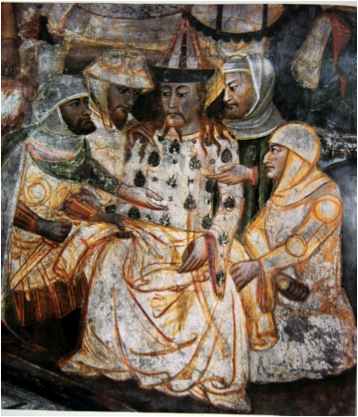
Portrait of a Mongol in the upper church
of Sacro Speco, Subiaco (Rome).
1340 ca.
Conférence
by Michele Bernardini
Università di Napoli « l’Orientale »
Italian art represents a complementary source of importance, although quite neglected, on the history of the relations between Italy and the States founded by the successors of Genghis Khan in Iran, China and Central Asia. If we can observe Mongolian types already in the 13th century, a substantial diffusion of the subject occurs from the 30s of the 14th century, when the Mongolian type also acquires particular traits in the iconography of the Crucifixion. The portraits of the Mongols in the Italian painting of the second half of the 14th century become stereotyped in coincidence with the end of the Ilkhanids and Yuan States. A revival of this iconography is checked at the beginning of the 15th century, at the time of the conflict between Tamerlane and the Ottoman Bayezid, when it became the expression of the humanist culture. This is the case of portraits of Tamerlane in the Orsini Palace in Rome, as well as the portrait of a Mongol by Pisanello in Verona.

